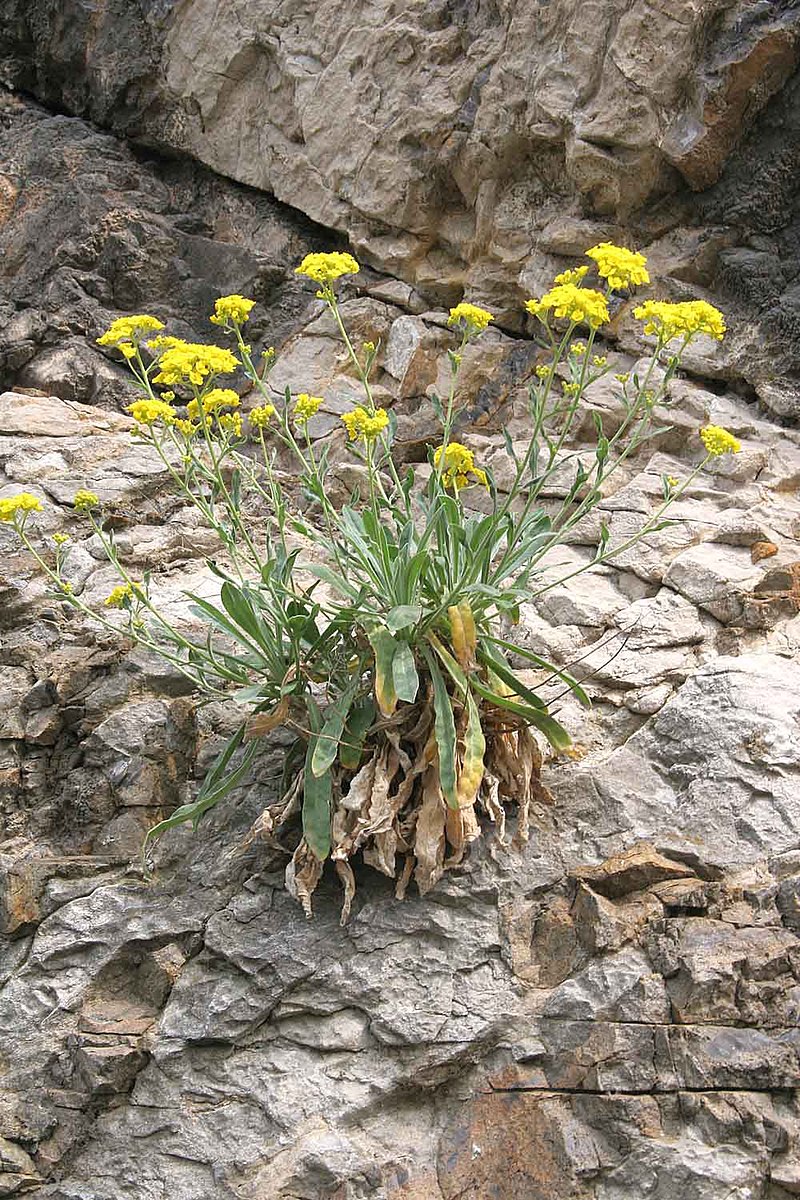The first nice find was a good stand of Purple Loosestrife (Lythrum salicaria) along Springs Canal, later to be seen again at the entrance to Skipton Wood. This attractive plant does not appear to have been recorded from this hectad previously.
Purple Loosestrife - I am cheating with this photo as it was taken at
Lowther Lake a couple of weeks back
Walking up The Bailey I was able to look up onto the walls of Skipton Castle where there were naturalised colonies of Aubrieta (Aubrieta deltoidea) and Golden Alison (Aurinia saxatilis). The former had not been recorded here previously, and the only other record for the hectad was last century (pre-1999, details very vague as is the case for too many records). Golden Alison was new to the hectad.
Golden Alison (photo by Prazak from Wikimedia Commons)
After a dull walk down into Embsay things picked up again with a number of oddities along Brackenley Lane. First up was a couple of plants of Upright Spurge (Euphorbia stricta). This is a rare British native but it is a casual up here. I see it is listed by some seed suppliers as 'Golden Foam'. A nice plant but I am not sure I need to grow it my garden. Each to their own.
Old walls further along the lane had Caucasian Stonecrop (Sedum spurium) and Snow-in-summer (Cerastium tomentosum), and then this surprise by the steps up to the footpath across the fields. Yellow Oxeye (Telekia speciosa).
Emerging onto Pasture Road I found a nice stand of Dusky Crane's-bill (Geranium phaeum var. phaeum) where Embsay Beck passes under the road. Still a few flowers present despite the season.
Musk, photo taken last year at Fewston Reservoir
Heading up onto the Moor, there was only slim pickings but it allowed me to record the usual suspects. The nicest find was Climbing Corydalis (Ceratocapnos claviculata). I then dropped down back towards Embsay. A few useful records were made on route, mainly garden escapes and plantings. The biggest surprise was Algerian Ivy (Hedera algeriensis) established in plantation behind the roadside wall. I suspect this species may be overlooked elsewhere, being passed over for Irish Ivy (Hedera hibernica Hibernica Group). Look out for large leaves, ruby red petioles and young stems, and a pine scent.
An old wall in Embsay had a nice bush of Garden Lavender (Lavandula angustifolia) growing out of it, no doubt self-seeded from a nearby garden.
Having a little time to kill before catching my train I wandered up to Skipton Woods. Not the most interesting of woods (especially at this time of year), too many feet and too much bare ground, but adding a few plants that had not been recorded previously. Including such obvious species as Branched Bur-reed (Sparganium erectum). It was also good to find the Herb-Paris (Paris quadrifolia) just about still in leaf, allowing me to collect a detailed grid reference. However justifying this brief diversion was the best find. A large plant of Indian-rhubarb (Darmera peltata) has somehow managed to establish in the bank of Eller Beck by the boardwalk. I'm not sure if this is the same plant last reported in 2004, the location details are too vague, but it seems likely.
Indian-rhubarb



















